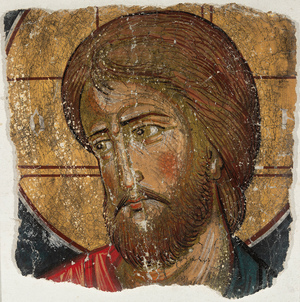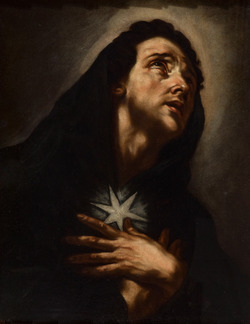Making the human divine
How could we distinguish a portrait of a 17th century knight from that of a saint? The tradition of Christian art for millennia has taken on a tool to help us differentiate it and thus recognize the mystical background that hides the painting: the nimbus or halo.
The origin of the word clearly resolves its definition. It comes from the Latin aurea which means golden or golden, that is, the halo or golden or luminous circle that surrounds the figures and presents the divine character of the wearer. Thanks to this feature we can distinguish the saints, the Virgin and Christ in each of the paintings in front of us. Why have we assumed this convention? what is its origin? The answer is fascinating.

We could find this halo in cultures all over the world, at extremes of each other and for thousands of years. The common feature is very interesting, since regardless of religion or culture, man has been identifying in a very similar way the divine in his own nature. The first example of the halo is found in Ancient Egypt, whose artistic conventions usually represent their gods with the solar disk on their heads. On the other side of the Mediterranean, the Greeks use the disc of light or flashing rays to identify some divinities such as the solar divinities in the case of Apollo or Helios. This trait would be assumed by the Romans who would extend it even to deified persons, such as the imperial family. In more remote parts such as India we also see the nimbus in images of Buddha. Perhaps a quick summary of these origins is that from the cradle of Egypt it influenced Greece, during the Hellenistic period it was transferred to India and later it was also imitated by the Roman Empire. It is just because of Roman art that Christian art assimilated the nimbus.
Paleochristian art uses from very early on the golden halo to identify the figure of Jesus and thus differentiate him from a costumbrist scene. It is likely that the first manifestations of Christ, which used to be as a good shepherd or as a young man with the twelve apostles, the nimbus became essential to give him a higher iconographic dignity. Thus the shepherd with his flock resembled the god Apollo in a bucolic scene or the banquet scenes, the last supper. Christian art has been evolving and adapting according to the peculiarities of each region and historical moment up to the present day. From the representations of Christ, the Virgin and later the saints were incorporated. The halo becomes an indispensable element as we see in such ancient examples as Byzantine icons. During the medieval period this feature remains and in the Baroque period it becomes a more dynamic and theatrical effect.

We have seen how that small halo of golden light emanating from the figures is automatically identified in our minds with the divine. It is curious to think that this trait is the product of thousands of years of tradition of cultures considerably distant from ours, however, despite time and space, it seems that we are not so different.






